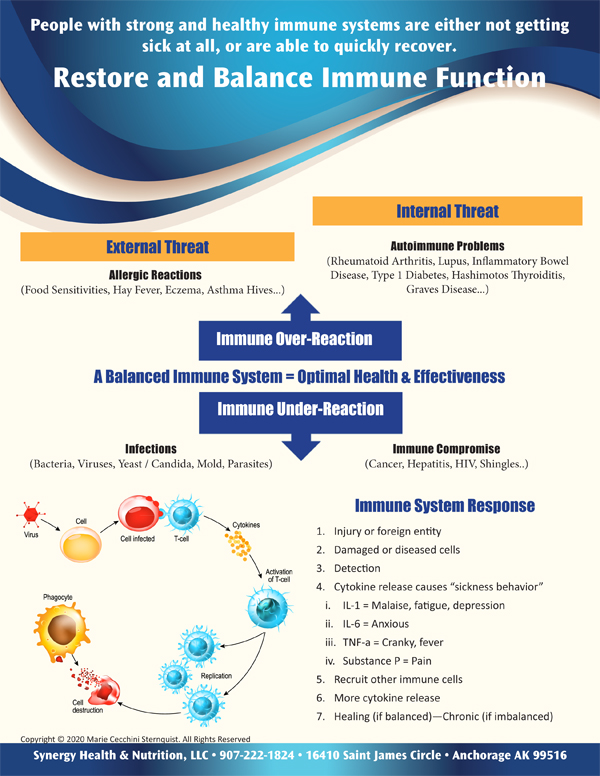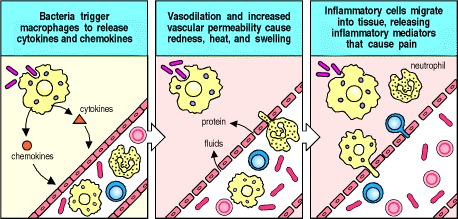I love the topic of children’s health. In my first podcast here: https://youtu.be/-7w50h-CO9k Armando Salcido of Success Tutoring Online interviews me regarding how the massive marketing aimed at children by sugary drinks, junk food, fast food, and other unhealthy choices really works and why. It’s hard to get kids eating well as a parent and that does impact their ability to learn.
Let’s look at childrens’ immune systems and a better way to keep children healthy:
- Why playing in the dirt is a huge boost to strengthen and balance the immune system.
- Enjoying the best health is not necessarily about avoiding illness, it’s about overcoming illness—be prudent and safe while getting your child back to school/activities quickly.
- Nature is always at work building strong, adaptive, young bodies—know when to step back and when to step in.
- Breakthrough ways to stop problems before they start.
- Natural health essentials for every family’s medicine chest.
I may just turn this into a podcast with Armando as well; let me know your thoughts.
Children are so moldable. They experience new things and learn; those new things become ever more complex as the child expands their abilities. Everything is developing in concert, including their immune systems, like a finely tuned concert.
What can we, as parents and conductors of that concert, do to contribute to our children’s future health? From the microbiome to how the immune system develops in a functional way; parents who know the value of playing outdoors; being around other children (especially after the isolations of COVID); having a good diet and not being railroaded into the fast foods, the junk foods, and the sugars… it’s all part of healthy growth—body, mind, and spirit. How can we influence their future health, their happiness, their minds, their futures?
After nearly 4 decades in clinical research and 2 decades using nutritional concepts, herbology, homeopathy, and other natural approaches, I’m finally seeing excellent clinical trials on natural health methods—and I’m pleased to say they are affirming the use of various foods, herbs, homeopathy, and other ancient wisdoms with sophisticated scientific methods previously used only to get FDA approval for new drugs.
First: A model of perfect health 200 years ago:
“It is the vital force (dynamis) animating the human organism that reigns supreme … maintaining [balance between] all parts of the living organism in harmony.”
–Samuel Hahnemann, considered the founder of the system of homeopathy.
There is a trajectory: Most of us are born healthy—especially if parents take steps to balance their own bodies well before conception and maintain balance throughout pregnancy. When we get out of balance, we’ve lost perfect health. However, that doesn’t mean we can’t regain it if we understand that our symptoms may tell us the nature of that imbalance. We can regain perfect health if we take steps to restore balance.
- We are not smarter than nature
- We cannot make better food than nature
- We need to eat real, whole food–period
In western medicine the first course of action is often a prescription to address the symptom. Sometimes medications are necessary and vital—should they be the first approach?
Think about it, the symptom would not exist if the imbalance didn’t exist. What about understanding the cause of the imbalance and restoring it naturally rather than using medicines that are completely foreign to the body and not at all part of nature?
We can do so much with a natural health philosophy. Even with today’s Standard American Diet (SAD) and lifestyle habits. For that matter, does it make sense to break the body down into it’s individual parts when everything is connected to everything and works in concert? Yet, we often find ourselves chasing symptoms rather than finding and fixing what’s really wrong.
Avoidance vs developing a stronger immune system: Perfect health is dynamic, flexible, adaptable
Health is not about avoiding illness; it’s about overcoming illness and becoming stronger in the process.

Every infant has a developing immune system along with all the rest of the systems that started developing in the womb. Childhood illnesses: Fever, cough, common cold… these teach the developing immune system how to play the game and win (with the exception of those ill from birth or who have immune systems that became overwhelmed by certain illnesses like infant meningitis, pertussis…—which we can minimize with good preconception and prenatal care). Even in those cases, once the crisis is over, we want to nurture a balanced and expanding immune system.
The immune system is like a see-saw: On one side is an ability to correctly address bacteria and viruses and on the other side is an ability to correctly detect and address cancer (under-reaction if it develops), autoimmune, allergies (over-reaction), chemicals, metals… We want to balance the immune system and its ability to go back and forth with an appropriate response; one side of the see-saw is surveillance, the other side is attack and destroy.
During and after illnesses, we should watch the child become stronger. We want to get them back not just to where they were before they got whatever illness, we want them stronger. The only way to do this is to continue natural, supportive, remedies long enough to provide support that makes the immune system stronger than it was before. This moves any individual of any age toward the “fullest potential/perfect health” that is nature’s ideal. In other words, with holistic, supportive, remedies we often stop once the symptoms are gone. Doing so doesn’t give anyone the resources to become more robust and stronger than before.
The three players of our immune systems

From Principles of innate and adaptive immunity.
First is surveillance, detect, and correct—also called the innate response. Some 70-80 percent of our immune system resides in the gut. This includes, barriers that prevent foreign substances to enter the insides of our bodies and processes that destroy unwanted substances. The rest is in circulation constantly on patrol for foreign invaders. When there is the threat of infection, an injury, cells gone wrong like cancer… surveillance should find them and remove them. Sometimes it makes mistakes as in allergies, autoimmune, or not detecting cancer, etc. But if we keep our immune system balanced then 99 percent of the time, day in and day out, it does a great job with detect and correct (usually destroy). How our immune system destroys unwanted viruses, cells and organisms, involves chemical warfare. It literally blasts the foreign entities or cancer cell with chemicals that will kill it, then “eats” the offender and removes the debris. It is this chemical warfare that causes symptoms. If the immune system is successful, no further action is needed.
Second, if need be, is forming antibodies—the adaptive response that occurs after the immediate crisis is over. We have to be careful with these. Vaccine use is about creating antibodies to avoid illness. If it isn’t broken, don’t fix it, let the body decide what to fix and how to create an even stronger balance. Regular antibiotic use also stops the immune system from adapting and creates imbalances.
And the third player is the gut microbiome which is 70-80 percent of the immune system. Sugars and processed foods develop an healthy gut microbiome. Antibiotics, other medications, chlorinated waters and other chemicals… these disrupt the gut microbiome. Real, whole foods (by the way, whole grains are not whole foods) help keep the right portions of beneficial bacteria, viruses, yeasts in the right location in the gut.
A medicine chest of liquid nutrition and herbs for every parent that aligns with nature
We want to support our immune system in learning, becoming more balanced and resilient, and creating preventive measures as need be.
These items should
- assist natural immunity
- assist immune balance
- support immune victory and adaptability
- support child health and happiness
Without:
- destroying the gut microbiome
- sacrificing the reach for perfect health,
- creating immune imbalance
 Common cold, virus, roseola (sixth disease), ear aches… we want to support the immune system so the infection does not run away but instead educates the body.
Common cold, virus, roseola (sixth disease), ear aches… we want to support the immune system so the infection does not run away but instead educates the body.
Why I love liquid products for children, and especially the Systeic Formulas line, is the simplicity of giving liquids that taste good. Also, these are derivatives of the whole herb, not components of the active portion of that herb manufactured synthetically and patented like the pharmaceutical model. The top two products, Fun Play and Brainy Play together provide a basic and complete set of vitamins, minerals, and omega fats to make sure each child gets the nutrients they need to grow well,
Boosting vs Balancing: What’s the goal for the immune system?
A balanced immune response also means suppressing unnecessary and harmful immune reactions. Not too little; not too much. Excessive immune response leads to allergies, chronic inflammation, rejection of transplants, and autoimmunity. Excessive responses can be caused by constant exposure to an allergen (foreign substance that causes an immune response), and/or continued immune activation well after the allergen is gone.
Herbs and food that balance immunity: For example, Echinacea, berberine, garlic, ginger, ginseng, and others help balance the immune system. There are also foods that improve the regulatory immune functions so the response is neither excessive nor insufficient. Certain probiotic strains (but not all), sources of retinol (a natural form of vitamin A) such as cod liver oil, liver, butter and eggs from pastured animals (must be pastured), natural vitamin E (The vitamin E family consists of four tocopherols and four tocotrienols with avocado, egg yolks, nuts and seeds containing various family members—eat a varied selection). The EPAs and DHAs found in fatty cold water fish like salmon, sardines and ling cod also help regulate the immune system.
Grab my handout, above, to share these concepts with your children in an easy-to-understand form—with doable actions on the second page.
Our job: Promote, maintain & protect health in body, mind, and spirit
The bottom line–Nature’s plan:
- Germs strengthen the immune system—over sanitation can weaken the immune system
- A healthy diet, plenty of exercise (especially outdoors in sunshine while playing in the dirt) helps prevent allergies and asthma
- Too many antibiotics, especially early in life predisposes the likelihood of allergies and asthma
- Support life-long adaptive immunity—once the immune system is exposed to “germs” it has a greater and more appropriate response throughout life
- Prevent hyperepression of innate and immune cytokines (immune system hormones)
- Ask: what precludes the imbalanced immune system? Bacterial, viral, fungal, parasitic? Diet? Exposure to chemicals and/or metals?
References:
Chaplin D. D. (2010). Overview of the immune response. The Journal of allergy and clinical immunology, 125(2 Suppl 2), S3–S23.
Gasmi, A., Shanaida, M., Oleshchuk, O., Semenova, Y., Mujawdiya, P. K., Ivankiv, Y., Pokryshko, O., Noor, S., Piscopo, S., Adamiv, S., & Bjørklund, G. (2023). Natural Ingredients to Improve Immunity. Pharmaceuticals (Basel, Switzerland), 16(4), 528.
Janeway CA Jr, Travers P, Walport M, et al. Immunobiology: The Immune System in Health and Disease. 5th edition. New York: Garland Science; 2001. Principles of innate and adaptive immunity.
Jiang Q. (2014). Natural forms of vitamin E: metabolism, antioxidant, and anti-inflammatory activities and their role in disease prevention and therapy. Free radical biology & medicine, 72, 76–90.
O’Gorman, W. E., Dooms, H., Thorne, S. H., Kuswanto, W. F., Simonds, E. F., Krutzik, P. O., Nolan, G. P., & Abbas, A. K. (2009). The initial phase of an immune response functions to activate regulatory T cells. Journal of immunology (Baltimore, Md. : 1950), 183(1), 332–339.



Leave a Reply
You must be logged in to post a comment.